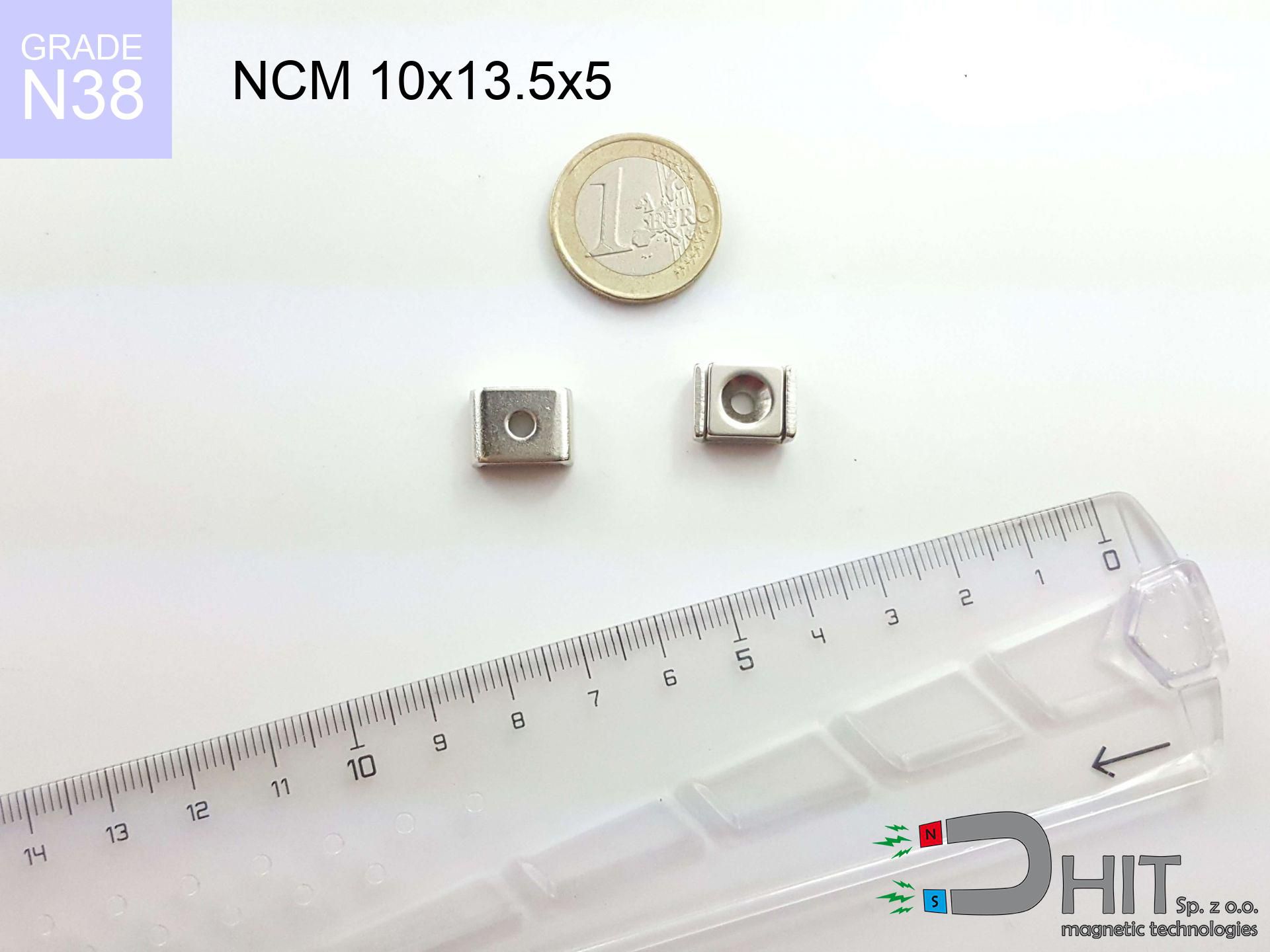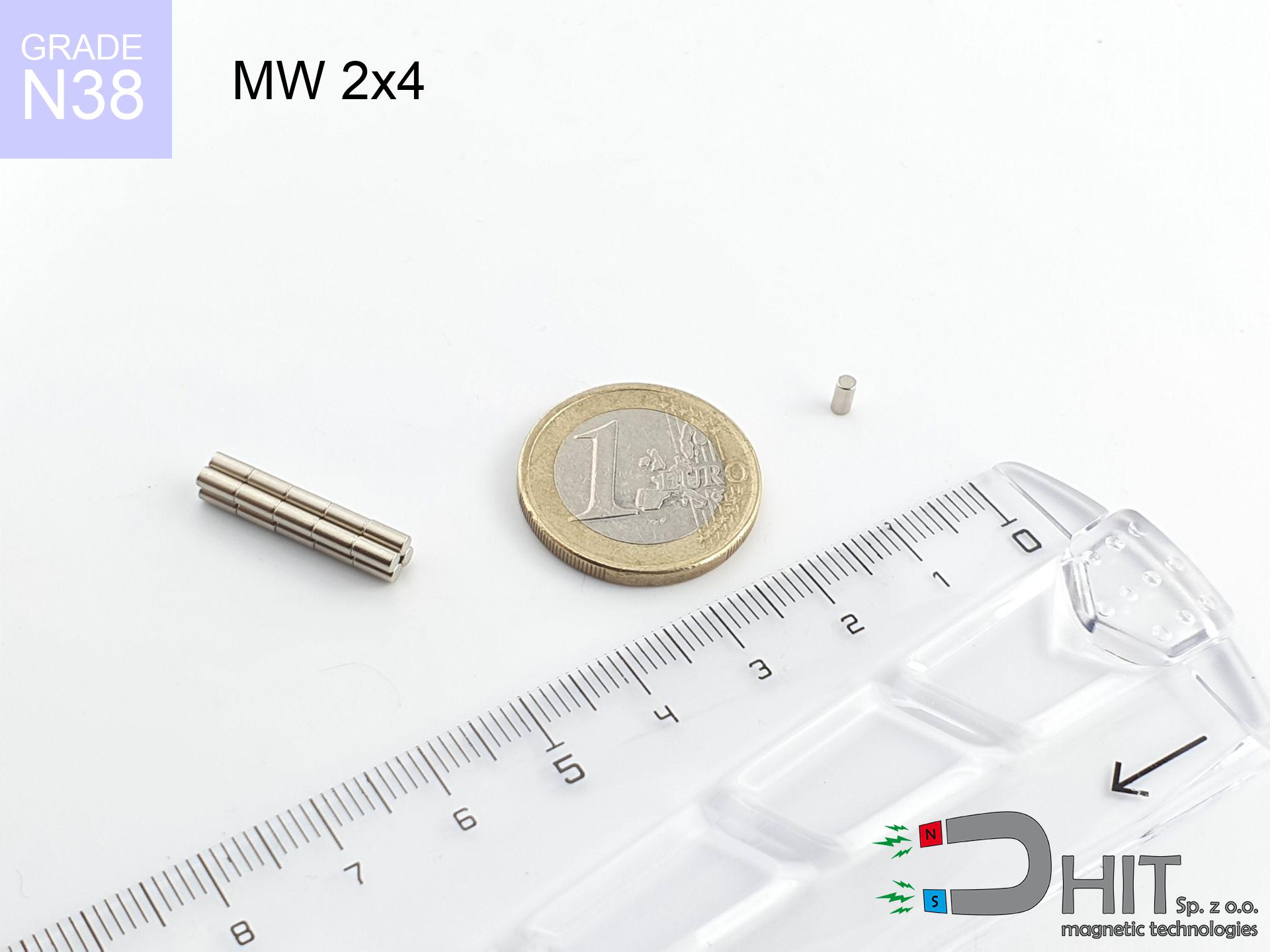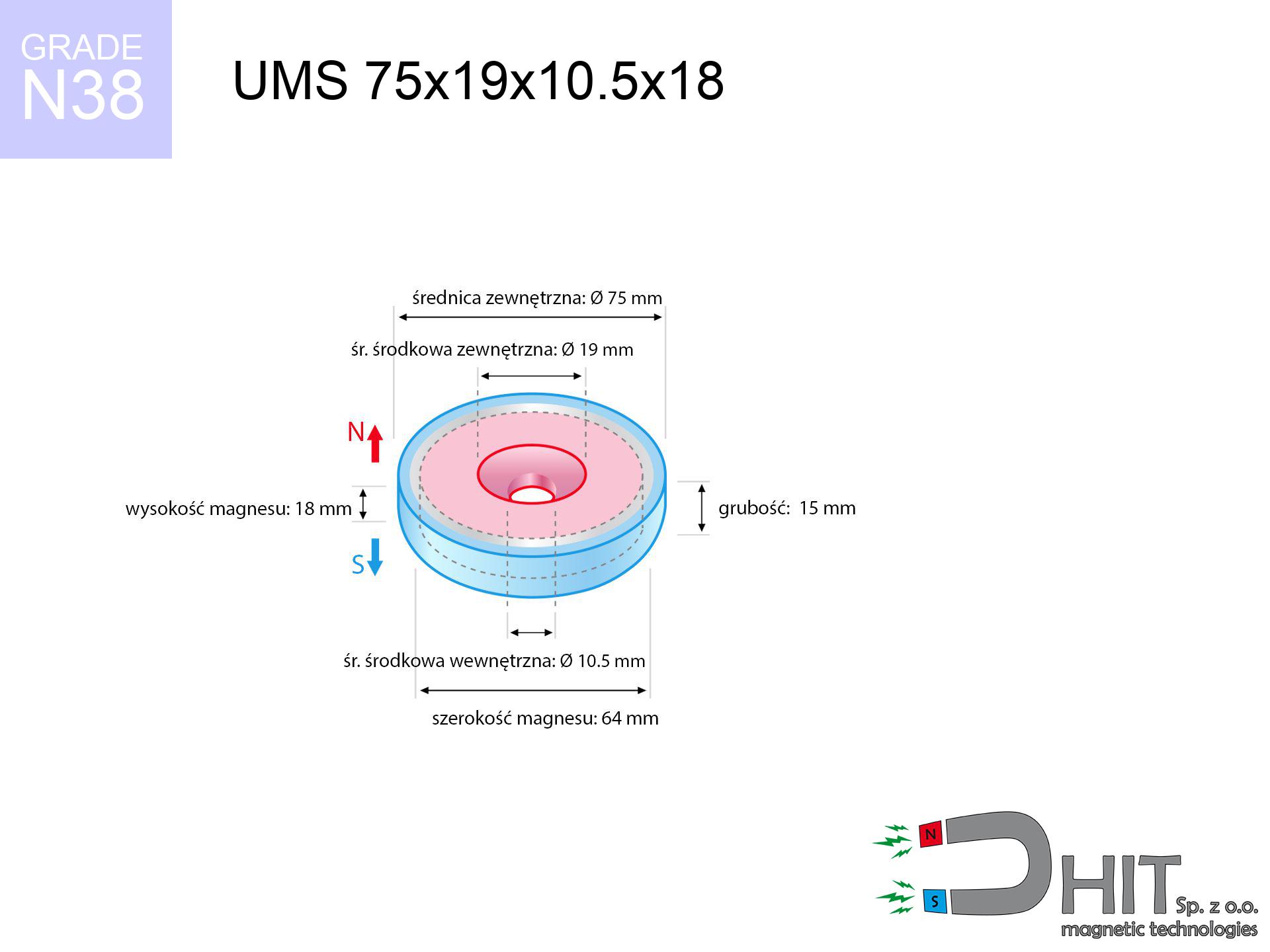NCM 10x13.5x5 / N38 - channel magnetic holder
channel magnetic holder
Catalog no 360485
GTIN/EAN: 5906301814849
Diameter Ø
10 mm [±1 mm]
Height
13.5 mm [±1 mm]
Weight
4.5 g
Magnetization Direction
↑ axial
Load capacity
4.00 kg / 39.23 N
Coating
[NiCuNi] Nickel
3.39 ZŁ with VAT / pcs + price for transport
2.76 ZŁ net + 23% VAT / pcs
bulk discounts:
Need more?
Contact us by phone
+48 888 99 98 98
if you prefer drop us a message using
form
the contact section.
Specifications and shape of a magnet can be checked using our
power calculator.
Orders submitted before 14:00 will be dispatched today!
Product card - NCM 10x13.5x5 / N38 - channel magnetic holder
Specification / characteristics - NCM 10x13.5x5 / N38 - channel magnetic holder
| properties | values |
|---|---|
| Cat. no. | 360485 |
| GTIN/EAN | 5906301814849 |
| Production/Distribution | Dhit sp. z o.o. |
| Country of origin | Poland / China / Germany |
| Customs code | 85059029 |
| Diameter Ø | 10 mm [±1 mm] |
| Height | 13.5 mm [±1 mm] |
| Weight | 4.5 g |
| Magnetization Direction | ↑ axial |
| Load capacity ~ ? | 4.00 kg / 39.23 N |
| Coating | [NiCuNi] Nickel |
| Manufacturing Tolerance | ±1 mm |
Magnetic properties of material N38
| properties | values | units |
|---|---|---|
| remenance Br [min. - max.] ? | 12.2-12.6 | kGs |
| remenance Br [min. - max.] ? | 1220-1260 | mT |
| coercivity bHc ? | 10.8-11.5 | kOe |
| coercivity bHc ? | 860-915 | kA/m |
| actual internal force iHc | ≥ 12 | kOe |
| actual internal force iHc | ≥ 955 | kA/m |
| energy density [min. - max.] ? | 36-38 | BH max MGOe |
| energy density [min. - max.] ? | 287-303 | BH max KJ/m |
| max. temperature ? | ≤ 80 | °C |
Physical properties of sintered neodymium magnets Nd2Fe14B at 20°C
| properties | values | units |
|---|---|---|
| Vickers hardness | ≥550 | Hv |
| Density | ≥7.4 | g/cm3 |
| Curie Temperature TC | 312 - 380 | °C |
| Curie Temperature TF | 593 - 716 | °F |
| Specific resistance | 150 | μΩ⋅cm |
| Bending strength | 250 | MPa |
| Compressive strength | 1000~1100 | MPa |
| Thermal expansion parallel (∥) to orientation (M) | (3-4) x 10-6 | °C-1 |
| Thermal expansion perpendicular (⊥) to orientation (M) | -(1-3) x 10-6 | °C-1 |
| Young's modulus | 1.7 x 104 | kg/mm² |
Chemical composition
| iron (Fe) | 64% – 68% |
| neodymium (Nd) | 29% – 32% |
| boron (B) | 1.1% – 1.2% |
| dysprosium (Dy) | 0.5% – 2.0% |
| coating (Ni-Cu-Ni) | < 0.05% |
Sustainability
| recyclability (EoL) | 100% |
| recycled raw materials | ~10% (pre-cons) |
| carbon footprint | low / zredukowany |
| waste code (EWC) | 16 02 16 |
View more products
Strengths as well as weaknesses of rare earth magnets.
Benefits
- They do not lose strength, even over approximately ten years – the drop in lifting capacity is only ~1% (according to tests),
- They do not lose their magnetic properties even under close interference source,
- A magnet with a shiny silver surface has better aesthetics,
- Magnets possess extremely high magnetic induction on the working surface,
- Made from properly selected components, these magnets show impressive resistance to high heat, enabling them to function (depending on their shape) at temperatures up to 230°C and above...
- In view of the option of accurate forming and adaptation to custom solutions, magnetic components can be modeled in a variety of forms and dimensions, which increases their versatility,
- Key role in modern industrial fields – they are commonly used in data components, drive modules, advanced medical instruments, also technologically advanced constructions.
- Relatively small size with high pulling force – neodymium magnets offer impressive pulling force in compact dimensions, which allows their use in small systems
Cons
- Susceptibility to cracking is one of their disadvantages. Upon intense impact they can fracture. We recommend keeping them in a strong case, which not only secures them against impacts but also increases their durability
- We warn that neodymium magnets can reduce their strength at high temperatures. To prevent this, we recommend our specialized [AH] magnets, which work effectively even at 230°C.
- Due to the susceptibility of magnets to corrosion in a humid environment, we suggest using waterproof magnets made of rubber, plastic or other material stable to moisture, in case of application outdoors
- Due to limitations in producing nuts and complicated shapes in magnets, we propose using casing - magnetic mount.
- Possible danger related to microscopic parts of magnets pose a threat, in case of ingestion, which gains importance in the context of child safety. Furthermore, small components of these devices are able to complicate diagnosis medical after entering the body.
- Due to complex production process, their price is higher than average,
Holding force characteristics
Maximum lifting capacity of the magnet – what affects it?
- using a base made of mild steel, serving as a circuit closing element
- possessing a thickness of at least 10 mm to avoid saturation
- with a surface free of scratches
- under conditions of no distance (metal-to-metal)
- under vertical application of breakaway force (90-degree angle)
- at ambient temperature approx. 20 degrees Celsius
Impact of factors on magnetic holding capacity in practice
- Space between surfaces – every millimeter of separation (caused e.g. by varnish or dirt) significantly weakens the magnet efficiency, often by half at just 0.5 mm.
- Angle of force application – highest force is reached only during perpendicular pulling. The shear force of the magnet along the surface is standardly many times smaller (approx. 1/5 of the lifting capacity).
- Metal thickness – thin material does not allow full use of the magnet. Magnetic flux passes through the material instead of converting into lifting capacity.
- Material composition – not every steel attracts identically. Alloy additives worsen the interaction with the magnet.
- Surface condition – ground elements guarantee perfect abutment, which improves force. Uneven metal reduce efficiency.
- Thermal conditions – neodymium magnets have a negative temperature coefficient. At higher temperatures they lose power, and in frost gain strength (up to a certain limit).
Lifting capacity testing was carried out on a smooth plate of optimal thickness, under perpendicular forces, in contrast under shearing force the load capacity is reduced by as much as fivefold. Moreover, even a minimal clearance between the magnet and the plate reduces the holding force.
Precautions when working with NdFeB magnets
Shattering risk
NdFeB magnets are sintered ceramics, which means they are fragile like glass. Collision of two magnets will cause them breaking into shards.
Safe distance
Intense magnetic fields can corrupt files on credit cards, HDDs, and storage devices. Maintain a gap of min. 10 cm.
Power loss in heat
Control the heat. Exposing the magnet above 80 degrees Celsius will destroy its properties and pulling force.
Bodily injuries
Pinching hazard: The pulling power is so immense that it can cause blood blisters, pinching, and broken bones. Use thick gloves.
Implant safety
Warning for patients: Powerful magnets disrupt electronics. Maintain at least 30 cm distance or request help to handle the magnets.
Avoid contact if allergic
It is widely known that the nickel plating (the usual finish) is a common allergen. For allergy sufferers, avoid touching magnets with bare hands or choose encased magnets.
Caution required
Handle magnets with awareness. Their immense force can surprise even professionals. Be vigilant and do not underestimate their force.
Machining danger
Drilling and cutting of NdFeB material poses a fire risk. Magnetic powder oxidizes rapidly with oxygen and is difficult to extinguish.
Keep away from electronics
Note: rare earth magnets generate a field that interferes with precision electronics. Keep a safe distance from your phone, device, and navigation systems.
Do not give to children
Neodymium magnets are not intended for children. Accidental ingestion of multiple magnets may result in them attracting across intestines, which poses a direct threat to life and requires urgent medical intervention.




![UMH 60x15x69 [M8] / N38 - magnetic holder with hook UMH 60x15x69 [M8] / N38 - magnetic holder with hook](https://cdn3.dhit.pl/graphics/products/umh-60x15x69-m8-nij.jpg)

![SM 32x350 [2xM8] / N52 - magnetic separator SM 32x350 [2xM8] / N52 - magnetic separator](https://cdn3.dhit.pl/graphics/products/sm-32x350-2xm8-fag.jpg)

